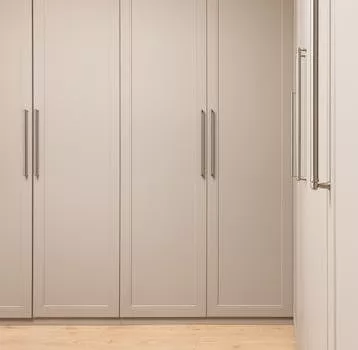Adapting Your Living Space: Key Features for a Comfortable Retirement Home
Designing a home that’s perfect for your retirement years requires careful consideration of your current and future needs, as well as a focus on creating a comfortable, safe, and accessible living environment. As you begin to plan your retirement home, it’s essential to think about the key features that will make your living space adaptable and suitable for your golden years. By incorporating these elements into your home design, you can ensure that your retirement years are spent in a space that is both functional and enjoyable.
One of the most important aspects of designing a retirement home is ensuring that it is accessible and easy to navigate. This means considering the layout of the home and making sure that there are no barriers or obstacles that could make it difficult for you to move around. For example, you may want to avoid having too many stairs or narrow hallways, as these can be challenging for individuals with mobility issues. Instead, opt for a single-story home or one with an elevator, and make sure that hallways and doorways are wide enough to accommodate a wheelchair or walker if necessary.
Another key feature to consider when designing your retirement home is the lighting. As we age, our eyesight can deteriorate, making it more difficult to see in dimly lit spaces. To combat this issue, make sure that your home is well-lit with a combination of natural and artificial light sources. Large windows and skylights can help to bring in natural light, while strategically placed lamps and overhead lighting can ensure that every room is adequately illuminated. Additionally, consider installing motion-sensor lights in hallways and bathrooms to make it easier to navigate your home at night.
Safety should also be a top priority when designing your retirement home. This includes installing grab bars in bathrooms and showers, as well as non-slip flooring to help prevent falls. You may also want to consider installing a walk-in shower or bathtub with a built-in seat, as these can be much easier to use for individuals with limited mobility. Additionally, make sure that your home is equipped with smoke detectors, carbon monoxide detectors, and a security system to help protect you and your belongings.
In addition to accessibility and safety features, it’s essential to think about the overall comfort and functionality of your retirement home. This includes choosing furniture and appliances that are easy to use and maintain, as well as selecting materials that are durable and easy to clean. For example, you may want to opt for hardwood or laminate flooring instead of carpet, as these materials are less likely to harbor allergens and are easier to keep clean.
Finally, don’t forget to consider the outdoor spaces of your retirement home. Having a well-maintained yard or garden can provide a peaceful retreat and a place to enjoy hobbies such as gardening or birdwatching. Make sure that your outdoor spaces are easily accessible and safe, with features such as ramps or handrails if necessary. Additionally, consider installing low-maintenance landscaping and automatic irrigation systems to help reduce the amount of time and effort required to maintain your outdoor spaces.
In conclusion, designing a home that’s perfect for your retirement years involves careful consideration of accessibility, safety, comfort, and functionality. By incorporating these key features into your home design, you can create a living space that is not only enjoyable but also suitable for your needs as you age. With thoughtful planning and attention to detail, you can ensure that your retirement years are spent in a home that is truly tailored to your needs and preferences.
The Ultimate Guide to Creating an Age-Friendly Home for Your Golden Years

Designing a home that’s perfect for your retirement years is an essential aspect of planning for the future. As we age, our needs and preferences change, and it’s crucial to create a living space that caters to these evolving requirements. An age-friendly home not only ensures comfort and convenience but also promotes safety, independence, and overall well-being. This article will provide you with the ultimate guide to creating an age-friendly home for your golden years.
First and foremost, it’s essential to consider the location of your home. As you age, you may require easy access to healthcare facilities, grocery stores, and other essential services. Additionally, a neighborhood with a strong sense of community and opportunities for social interaction can significantly enhance your quality of life. Therefore, it’s crucial to choose a location that offers a balance of convenience, safety, and social engagement.
Once you’ve selected the ideal location, it’s time to focus on the design and layout of your home. Single-story living is highly recommended for seniors, as it eliminates the need to navigate stairs and reduces the risk of falls. If a multi-story home is unavoidable, consider installing a stairlift or elevator to ensure ease of mobility between floors. Additionally, open floor plans with wide doorways and hallways can accommodate wheelchairs or walkers if needed, providing ample space for maneuverability.
Incorporating universal design principles into your home can significantly enhance its age-friendliness. Universal design aims to create spaces that are accessible and usable by people of all ages and abilities. Some key elements of universal design include no-step entryways, lever-style door handles, and rocker light switches. These features not only benefit seniors but also improve the overall functionality and convenience of the home for all residents.
The kitchen and bathroom are two areas of the home that require special attention when designing for your retirement years. In the kitchen, consider installing adjustable countertops and cabinets that can be raised or lowered to accommodate different heights and abilities. Additionally, opt for appliances with easy-to-read controls and front-mounted buttons for ease of use. In the bathroom, incorporate grab bars near the toilet and shower, as well as a walk-in shower or tub with a built-in seat. Non-slip flooring is also essential to prevent falls and ensure safety.
Lighting plays a crucial role in creating an age-friendly home. As we age, our eyesight tends to decline, making it essential to have adequate lighting throughout the house. Opt for bright, energy-efficient LED bulbs and ensure that all areas of the home, including hallways and staircases, are well-lit. Additionally, consider installing motion-sensor lights in key areas, such as the bathroom and entryways, for added convenience and safety.
Finally, don’t forget to plan for the future by incorporating smart home technology into your age-friendly design. Voice-activated assistants, such as Amazon’s Alexa or Google Home, can help seniors control lights, thermostats, and appliances with ease. Additionally, home security systems and medical alert devices can provide peace of mind and ensure that help is readily available in case of an emergency.
In conclusion, designing a home that’s perfect for your retirement years requires careful planning and consideration of your evolving needs and preferences. By incorporating age-friendly design elements, such as single-story living, universal design features, and smart home technology, you can create a comfortable, safe, and convenient living space that will serve you well throughout your golden years. With the right planning and foresight, you can enjoy a happy, healthy, and fulfilling retirement in a home that’s truly tailored to your needs.
Top Trends in Senior-Friendly Home Design: Making Your Space Safe and Stylish
Designing a home that’s perfect for your retirement years is an exciting and rewarding process. As you plan for this new chapter in your life, it’s essential to consider the top trends in senior-friendly home design. By incorporating these elements into your space, you can create a safe, stylish, and comfortable environment that will support your needs and preferences as you age.
One of the most significant trends in senior-friendly home design is the concept of universal design. This approach focuses on creating spaces that are accessible and functional for people of all ages and abilities. By incorporating universal design principles into your home, you can ensure that your space will be comfortable and usable for years to come, even as your needs change. Some key elements of universal design include wide doorways and hallways, lever-style door handles, and non-slip flooring.
Another important trend in senior-friendly home design is the use of smart technology. Today’s seniors are more tech-savvy than ever before, and many are embracing the convenience and security that smart home devices can provide. From voice-activated assistants like Amazon’s Alexa to smart thermostats and lighting systems, these devices can make daily tasks easier and more enjoyable for seniors. Additionally, smart home security systems can provide peace of mind by allowing you to monitor your home remotely and receive alerts if anything unusual occurs.
Lighting is another crucial aspect of senior-friendly home design. As we age, our eyesight can decline, making it more difficult to see in dimly lit spaces. To combat this issue, consider incorporating ample natural light into your home through large windows and skylights. Additionally, ensure that your space is well-lit with a combination of ambient, task, and accent lighting. This will not only make your home more functional but also create a warm and inviting atmosphere.
In addition to lighting, color plays a significant role in creating a comfortable and stylish senior-friendly home. As we age, our color perception can change, making it more challenging to distinguish between certain hues. To address this issue, consider using high-contrast color schemes in your home. This can make it easier for seniors to navigate their space and identify important features, such as doorways and light switches. Additionally, choose colors that evoke a sense of calm and relaxation, such as soft blues, greens, and neutrals.
Finally, consider the layout and organization of your home when designing a senior-friendly space. Open floor plans are becoming increasingly popular among seniors, as they allow for easy navigation and create a sense of spaciousness. Additionally, consider incorporating plenty of storage solutions into your home to reduce clutter and make it easier to find and access items. This can be particularly important for seniors who may have mobility or cognitive challenges.
In conclusion, designing a home that’s perfect for your retirement years involves considering a variety of factors, including universal design principles, smart technology, lighting, color, and layout. By incorporating these top trends in senior-friendly home design, you can create a space that is not only safe and functional but also stylish and inviting. As you embark on this exciting journey, remember that your home should be a reflection of your unique needs and preferences. With careful planning and attention to detail, you can create a beautiful and comfortable environment that will support you throughout your golden years.
Q&A
Question 1: What are the key features to consider when designing a home for retirement years?
Answer 1: Key features to consider include single-level living, wide doorways and hallways, accessible bathrooms with grab bars and walk-in showers, low-maintenance materials, energy-efficient design, ample natural light, and flexible spaces that can accommodate changing needs.
Question 2: How can I ensure my retirement home is both comfortable and functional?
Answer 2: To ensure comfort and functionality, prioritize open floor plans, incorporate universal design principles, provide ample storage, create outdoor living spaces, and consider incorporating smart home technology for added convenience and safety.
Question 3: What are some important safety features to include in a retirement home design?
Answer 3: Important safety features include well-lit spaces, slip-resistant flooring, grab bars in bathrooms, lever-style door handles, easy-to-reach electrical outlets and switches, and a security system for added peace of mind.
Conclusion
In conclusion, designing a home for retirement years involves careful planning and consideration of factors such as accessibility, safety, comfort, and functionality. By incorporating universal design principles, low-maintenance materials, and energy-efficient features, one can create a living space that caters to the changing needs and preferences of retirees, ensuring a comfortable and enjoyable living environment for their golden years.


